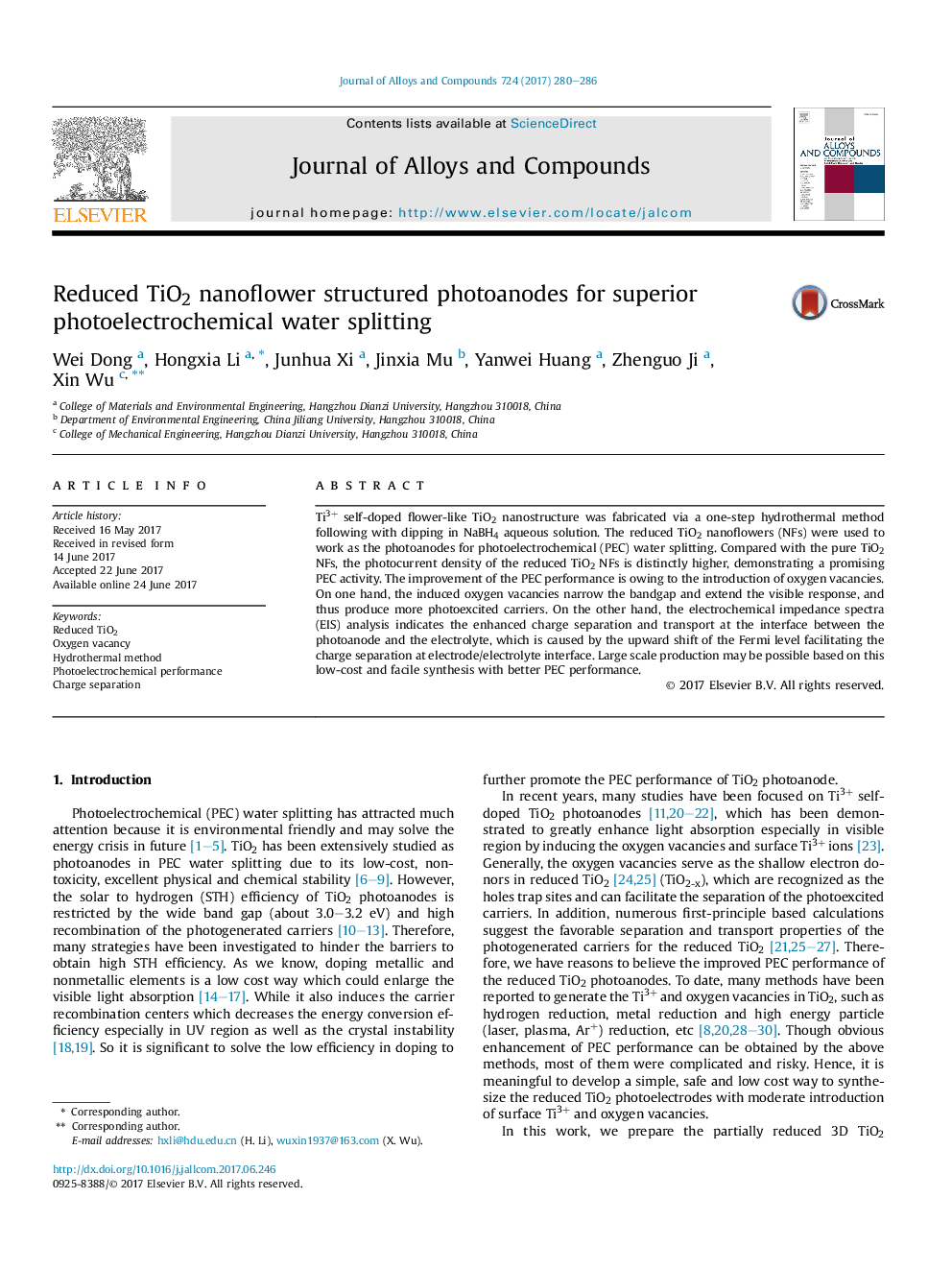| Article ID | Journal | Published Year | Pages | File Type |
|---|---|---|---|---|
| 5460094 | Journal of Alloys and Compounds | 2017 | 7 Pages |
Abstract
Ti3+ self-doped flower-like TiO2 nanostructure was fabricated via a one-step hydrothermal method following with dipping in NaBH4 aqueous solution. The reduced TiO2 nanoflowers (NFs) were used to work as the photoanodes for photoelectrochemical (PEC) water splitting. Compared with the pure TiO2 NFs, the photocurrent density of the reduced TiO2 NFs is distinctly higher, demonstrating a promising PEC activity. The improvement of the PEC performance is owing to the introduction of oxygen vacancies. On one hand, the induced oxygen vacancies narrow the bandgap and extend the visible response, and thus produce more photoexcited carriers. On the other hand, the electrochemical impedance spectra (EIS) analysis indicates the enhanced charge separation and transport at the interface between the photoanode and the electrolyte, which is caused by the upward shift of the Fermi level facilitating the charge separation at electrode/electrolyte interface. Large scale production may be possible based on this low-cost and facile synthesis with better PEC performance.
Keywords
Related Topics
Physical Sciences and Engineering
Materials Science
Metals and Alloys
Authors
Wei Dong, Hongxia Li, Junhua Xi, Jinxia Mu, Yanwei Huang, Zhenguo Ji, Xin Wu,
